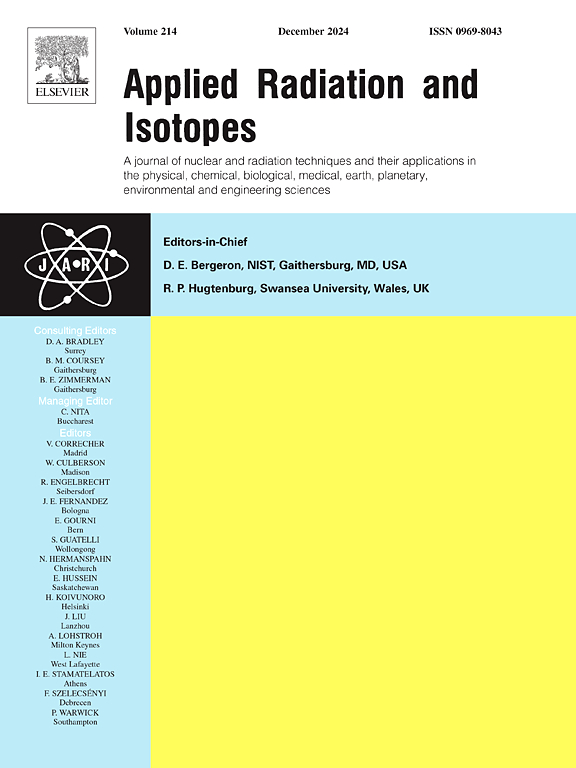Novel smart materials with high curie temperatures: Eu1.90Dy0.10Ge2O7, Eu1.90La0.10Ge2O7 and Eu1.90Ho0.10Ge2O7
IF 1.8
3区 工程技术
Q3 CHEMISTRY, INORGANIC & NUCLEAR
引用次数: 0
Abstract
The Eu1.90Dy0.10Ge2O7, Eu1.90La0.10Ge2O7 and Eu1.90Ho0.10Ge2O7 powder were obtained through a solid-state reaction method via multistep firing of stoichiometric ratios of Eu2O3, GeO2, Dy2O3, La2O3 and Ho2O3 in open atmosphere at temperatures from 800 to 1150 °C. The thermal behaviour, phase formation, SEM/EDX analysis, photoluminescence properties, Curie tempereture, dielectric and piezoelectric properties of the samples were investigated by TG/DTA, XRD, SEM, PL, TG/DTA, LCR-meter and d33-meter, respectively. The germenates having triclinic crystal system have 5D0→7F4, 5D0→7F3, 5D0→7F2, 5D0→7F1 transitions of Eu3+ ions. Also, the photoluminescent germenates show electrical properties and the piezoelectric charge constant of germenates showed Eu1.90Dy0.10Ge2O7> Eu1.90Ho0.10Ge2O7 > Eu1.90La0.10Ge2O7 trend. The Curie temperature of Eu1.90Dy0.10Ge2O7, Eu1.90La0.10Ge2O7 and Eu1.90Ho0.10Ge2O7 are 825, 844 and 838 °C, respectively. Compared to commonly used piezoelectric materials, Eu1.90Dy0.10Ge2O7, Eu1.90La0.10Ge2O7 and Eu1.90Ho0.10Ge2O7 materials with very high Curie temperatures were obtained with photoluminescent properties.
新型高居里温度智能材料:Eu1.90Dy0.10Ge2O7、Eu1.90La0.10Ge2O7和Eu1.90Ho0.10Ge2O7。
在800 ~ 1150℃的露天气氛中,以Eu2O3、GeO2、Dy2O3、La2O3和Ho2O3的化学计量比为原料,采用固相反应法多步烧制Eu1.90Dy0.10Ge2O7、Eu1.90La0.10Ge2O7和Eu1.90Ho0.10Ge2O7粉末。采用TG/DTA、XRD、SEM、PL、TG/DTA、LCR-meter、d33-meter等测试手段对样品的热行为、相形成、SEM/EDX分析、光致发光性能、居里温度、介电和压电性能进行了表征。具有三斜晶系的胚珠具有5D0→7F4、5D0→7F3、5D0→7F2、5D0→7F1的Eu3+跃迁。光致发光晶片具有良好的电学性能,晶片的压电电荷常数呈Eu1.90Dy0.10Ge2O7> Eu1.90Ho0.10Ge2O7 > Eu1.90La0.10Ge2O7趋势。Eu1.90Dy0.10Ge2O7、Eu1.90La0.10Ge2O7和Eu1.90Ho0.10Ge2O7的居里温度分别为825℃、844℃和838℃。与常用的压电材料相比,获得了居里温度非常高的Eu1.90Dy0.10Ge2O7、Eu1.90La0.10Ge2O7和Eu1.90Ho0.10Ge2O7材料的光致发光性能。
本文章由计算机程序翻译,如有差异,请以英文原文为准。
求助全文
约1分钟内获得全文
求助全文
来源期刊

Applied Radiation and Isotopes
工程技术-核科学技术
CiteScore
3.00
自引率
12.50%
发文量
406
审稿时长
13.5 months
期刊介绍:
Applied Radiation and Isotopes provides a high quality medium for the publication of substantial, original and scientific and technological papers on the development and peaceful application of nuclear, radiation and radionuclide techniques in chemistry, physics, biochemistry, biology, medicine, security, engineering and in the earth, planetary and environmental sciences, all including dosimetry. Nuclear techniques are defined in the broadest sense and both experimental and theoretical papers are welcome. They include the development and use of α- and β-particles, X-rays and γ-rays, neutrons and other nuclear particles and radiations from all sources, including radionuclides, synchrotron sources, cyclotrons and reactors and from the natural environment.
The journal aims to publish papers with significance to an international audience, containing substantial novelty and scientific impact. The Editors reserve the rights to reject, with or without external review, papers that do not meet these criteria.
Papers dealing with radiation processing, i.e., where radiation is used to bring about a biological, chemical or physical change in a material, should be directed to our sister journal Radiation Physics and Chemistry.
 求助内容:
求助内容: 应助结果提醒方式:
应助结果提醒方式:


